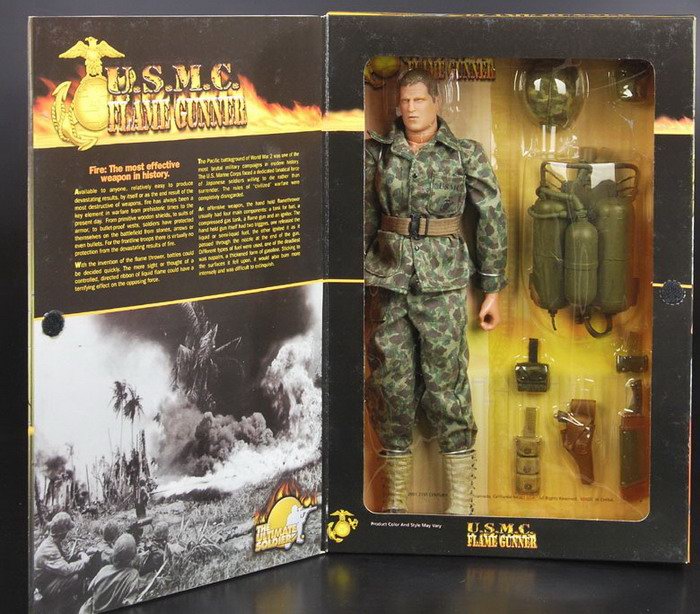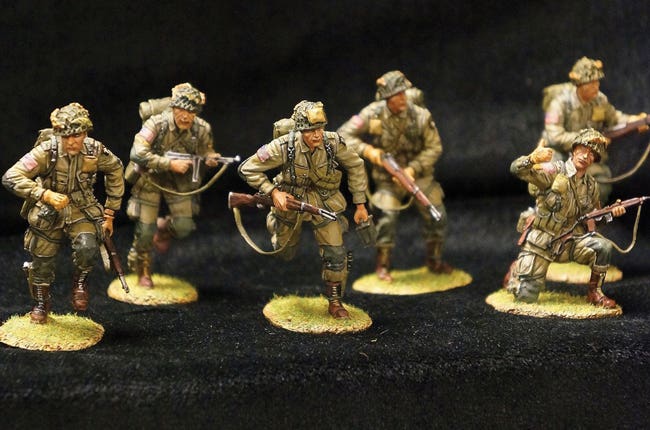Alright, so I recently dove back into the world of model soldiers, specifically focusing on World War II stuff. It's been a while, but the bug bit me again, you know? I figured I’d share how I got things rolling and what I've been up to.
Getting Started Again
First off, I had to figure out what I even wanted to build. WW2 is massive, right? So many different armies, vehicles, and all that. I decided to kick things off with some infantry. They're kind of the backbone of any scene, I reckon. I poked around online, looked at some old books I had, and decided on some late-war German and American GIs. Seemed like a good starting point to get my eye back in.
Then came the kits. I remembered building Airfix and Tamiya stuff as a kid, so I looked for those. Grabbed a couple of 1/72 scale infantry boxes. Small scale, so you can build up a good number of figures without them taking over the whole house. Plus, they're generally a bit cheaper, which is good when you're just getting back into the swing of things.

The Actual Process: From Sprue to Shelf
Okay, so I got my boxes. First thing I did was wash all the sprues. Just some warm water and a bit of dish soap, then rinsed and let them air dry. Gets rid of any oils from the molding process, helps the paint stick better. I remember learning that the hard way years ago!
Next up, tools. I had some old ones, but a few needed replacing.
- A good hobby knife: Essential for cutting parts off the sprue and cleaning up mold lines. Fresh blades are key.
- Sprue cutters: Makes getting parts off much cleaner than just twisting them.
- Files and sandpaper: Tiny ones, for smoothing out those pesky mold lines or bits of sprue gate.
- Plastic glue: The smelly stuff! I got a tube with a fine applicator.
- Tweezers: For holding tiny parts. My fingers are way too clumsy for some of this stuff.
Assembly was the next big step. I started with one figure, just to get a feel for it. Snipped the parts, carefully trimmed off any excess plastic. Some of these poses are a bit fiddly, especially getting the arms and weapons to line up right. Took a bit of patience, and yeah, I might have glued my fingers together once or twice. Classic. I tried to do a few figures at a time, assembly-line style, but not too many, or it feels like a chore.
Painting: Where the Magic (and Frustration) Happens
This is the part I both love and get super frustrated with. Getting the colors right for WW2 uniforms can be a rabbit hole. I did some basic research online for German field grey and American olive drab. I'm not aiming for museum-perfect accuracy, just something that looks good enough on the tabletop or a small display.
I started with a primer. I just used a spray can, light grey. Helps the paint adhere and shows up details. Then, block painting the main uniform colors. Slow and steady. Multiple thin coats are better than one thick, gloopy one. Learned that lesson too, believe me.

Then the details: belts, boots, webbing, rifles. This is where a steady hand and a tiny brush come in handy. I'm talking a 00 or even a 000 brush. It's slow going. Sometimes I’d do all the boots on a batch of figures, then all the helmets, just to break it up.
I even tried a bit of a wash – thinned down dark paint – to bring out the details in the folds of the clothes and around straps. It really makes them pop. And a tiny bit of dry brushing with a lighter color to highlight raised edges. Still practicing these techniques, but they make a big difference.
The Outcome and What's Next
So now I’ve got a small squad of Germans and Americans painted up. They're not perfect, by any means. If you look close, you’ll see the odd mistake or a wobbly line. But you know what? I’m pretty chuffed with them. It’s satisfying to see these little plastic guys go from a flat sprue to something that looks like a miniature soldier.
It’s a really absorbing hobby. You kind of zone out when you're focused on painting a tiny buckle or getting a rifle sling just right. Good way to unwind, actually. My plan is to build up a few more squads, maybe get a vehicle or two. A Sherman tank would be cool, or maybe a Panzer IV. We’ll see. For now, I’m just enjoying the process of bringing these little bits of history to life on my workbench.












